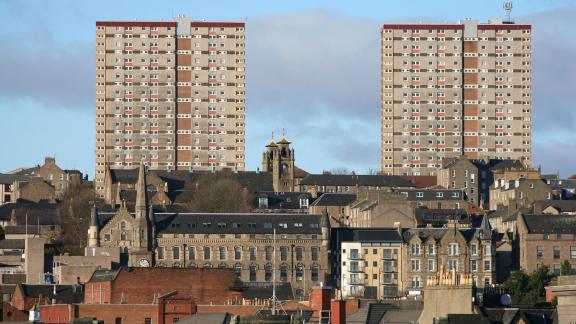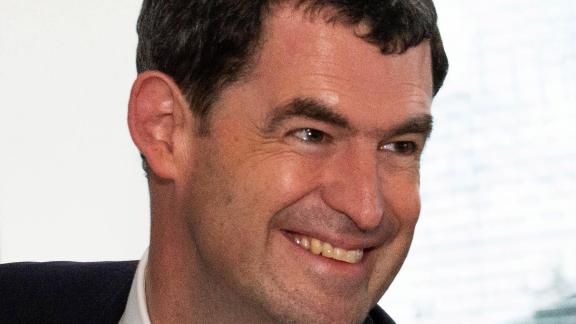How is the NHS performing this winter? 6-12 December 2021 in review

At a glance
The latest data shows a difficult picture in urgent care, with huge pressure across multiple points of the patient journey:
- Flow in – Last week, there were record numbers of ambulance handover delays with an unprecedented 1 in 10 ambulances taking over 60 minutes to handover to the hospital. 23 per cent of patients experienced ambulance handover delays of 30 minutes or more.
- In hospital – Bed occupancy has risen week on week and exceeded 93 per cent for general and acute beds this last week. In comparison, when battling COVID-19 challenges last winter the average bed occupancy never rose above 90 per cent per week nationally. This is concerning. Infection prevention control measures mean capacity pressures are occurring at lower overall occupancy than before. At the same time, we are starting to see a rise in staff absences particularly in the east of England and London, where Omicron has been the most prevalent, further affecting capacity.
- Flow out – The problems with flow in and bed occupancy are exacerbated by data showing that for the second week running, more than 1 in 10 beds were occupied by patients who were medically fit to leave. More than half of inpatients who no longer met the criteria to reside in hospital were unable to be discharged on that day. Many of these patients will be waiting for social care services, with the statistics showing a continued deterioration in domiciliary and home care as outlined by ADASS, despite the best efforts of staff.
Flow in
Ambulance handover delays
The target for hospitals in the NHS Standard Contract states that all handovers between ambulance and A&E must take place within 15 minutes, with none waiting more than 30 minutes. The recent Association of Ambulance Chief Executives (AACE) review into handover delays across 2021 found that over 8 out of 10 of those whose handover was delayed beyond 60 minutes were assessed as likely to have experienced some level of harm, with just under 1 in 10 experiencing severe harm.
The level of ambulance handover delays in the latest data release is significantly higher than any previous winters, as shown in the chart below. There were 8,211 delays of 60-minutes or more in the week commencing 29 November, and 8,401 week commencing 6 December (this is out of 83,956 arrivals, so 10 per cent were over 60 minutes.
* This chart matches ‘week’ based on the calendar year, starting on week 48 for 2021/22 (week commencing 29 November). Week 53 is included but no data point will be available for this year; Christmas Day was in week 52 in 2019/20 and 2020/21, where the number of delays reduces in the chart.
Meanwhile, the total number of delays over 30 minutes in England in the week commencing 6 December was 19,503. This accounts for over 23 per cent of all ambulances arriving. In the equivalent week (week 49), the highest previous number of 30-minute delays was 14,599, which was in winter 2019/20. The previous record in urgent and emergency care weekly sitreps was 18,251, the week commencing 30 December 2019.
In hospital
Bed occupancy
General and acute bed occupancy (adult plus paediatric beds) for week commencing 6 December was an average 93.3 per cent, up from 92.8 per cent the previous week. In adult beds only this was slightly higher, exceeding 94.3 per cent, and was as high as 95 per cent on 9 December.
As shown below, this means heading towards Christmas with challenges over infection prevention control and rising COVID-19 hospitalisations. However, bed occupancy is much closer to a normal winter than last year, where bed occupancy stayed below 90 per cent on average throughout. Due to infection prevention control measures, hospitals are likely to experience capacity pressures at lower occupancy rates than previously would have been expected.*
Providers in the south west average the highest adult general and acute bed occupancy at 96.1 per cent, with the north east and Yorkshire the lowest at 93 per cent. This means all regions are operating at averages above the levels many consider safe. One member told us that the recent planning guidance had targeted general and acute bed occupancy between 85 and 92 per cent, but due to current winter pressures that was simply unachievable.
Note the Y-axis below begins at 80, to show the regional variation despite this being a range of just over 3 per cent.
More than 260 beds across England also had to be closed on an average day last week, due to diarrhea and vomiting or Norovirus symptoms.
Staff absence
The average number of staff absent per day from acute provider trusts due to COVID-19-related absence was 12,897, up from under 12,000 in the previous week. The average number of staff absent per day for all causes also rose, from 58,472 to 59,571.
These rises are most noticeable in the east of England (average absences per day up 10 per cent) and London (up 6 per cent, but COVID-19-related absences specifically were up 32 per cent), where the Omicron variant has been the most prevalent.
Flow out
Discharges
The data last week showed that more than one in ten beds were occupied by patients who were medically fit to leave, while an average of 54 per cent of inpatients no longer meeting the criteria to reside in hospital were not discharged on that day. As an example, on Monday 6 December, 18,995 patients no longer met the criteria to be in hospital but only 8,711 were actually discharged.
Of these patients who were fit to be discharged, an average of over 4,500 per day had been in hospital for over 21 days.
These numbers illustrate a challenging picture of NHS trusts unable to free up beds, adding to problems with inflow shown in the previous sections.
Long-stay patients
Long-stay patients in the dataset are those who have been in hospital for seven days or more. Some will be extremely ill and need care over a longer period, but many may remain in hospital due to delayed discharges or other reasons, such as waiting for a diagnostic test or further referral.
From 6 to 12 December, the average number of long-stay patients was:
- 42,784 patients over seven days
- 24,152 over 14 days
- 15,290 over 21 days.
To put this into context, in the chart below, see the average for last week (week 49 of 2021) against the equivalent weeks in 2019 and 2020. Again, this is a really close comparison to a typical winter when you compare with 2019, but the numbers are vastly higher than last year when the service was also faced with COVID-19:
How is the NHS performing?
View our analysis of the latest NHS performance figures for a rounded view of how healthcare services are coping under immense pressure.



